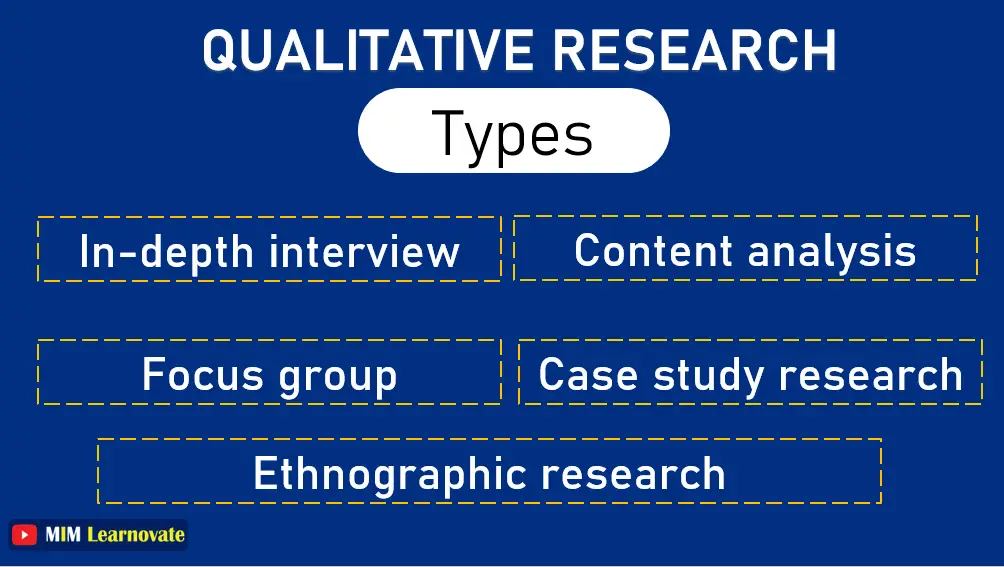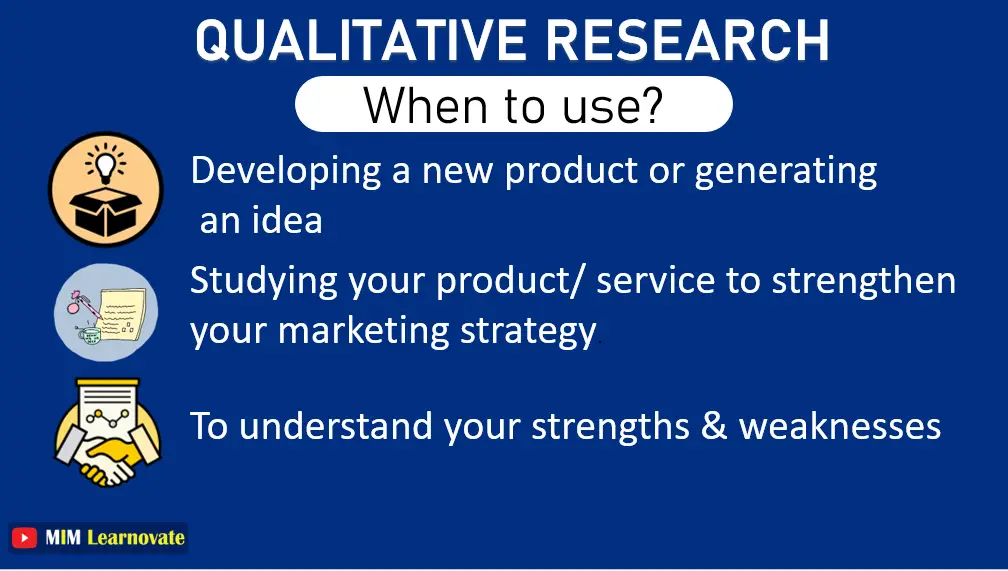Qualitative research is a broad term used to describe a range of research methods that are usually seen as being in opposition to quantitative research.
Qualitative methods are often described as being more ‘human’ and less ‘scientific’ than quantitative methods, but they can also be much more effective when attempting to answer certain questions.
Qualitative researchers use specific research techniques such as interviews, focus groups, case studies, or observations to answer different types of questions and find out specific things about their subjects.
The aim is to explore ideas, beliefs, meanings, and motivations behind why people think or act in a certain way, rather than measuring the frequency or quantity of a phenomenon. Read this article for an explanation of the main types of qualitative research with examples from different domains.
What is qualitative research?
Qualitative research is a broad term that describes the many different types of methods used to explore and understand the world through the use of language and discourse as opposed to numbers and figures.
In quantitative research, the world is broken down into numbers and facts – i.e. 2 people prefer brand A over brand B. In qualitative research, the world is broken down into words and stories – i.e. ‘people chose brand A because they believed it was healthier and tastier than brand B’.
Although different types of qualitative research methods are often used together to explore a topic in depth, qualitative research is not the same as a fully exploratory approach. It does not start with an open, unstructured discussion but with a clear focus on the research question, with a set of concepts and categories to explore and a clear set of research methods to support the exploration.
A market research technique known as qualitative research focuses on gathering information through conversational and open-ended communication.
This approach considers both the “what” and “why” of people’s opinions. Qualitative research techniques are made to assist you to understand how a target audience behaves and thinks about a particular subject.
Example Qualitative Research
Think of a convenience store that wants to increase customer traffic. A thorough investigation reveals that more men frequent this store than women. An in-depth interview with potential customers in the category is a good way to find out why ladies weren’t coming to the business.
The store doesn’t have enough items for women, which is why there are fewer women visiting the store, which was understood only by personally interacting with them and understanding why they didn’t visit the store because there were more male products than female ones.
This was discovered after successfully interviewing female customers, visiting the nearby stores and malls, and selecting them through random sampling.
Types of qualitative research
This section describes the main types of qualitative research methods used in social science research. These are not comprehensive, as different types of qualitative research exist in every field of study, but they are among the most common methods used in social science research.

One-on-one interview
The one-on-one interview is a classic research method in which the researcher interviews one person in depth. This can be done by interviewing people face to face or online, and can be used for a variety of topics such as exploring how people make decisions or what people think about an issue. One respondent is interviewed at a time in a personal interview.
This approach is entirely conversational and provides chances to probe the respondent for specific information.
Focus groups
A focus group is a type of qualitative method that brings together a group of people (e.g. 6-8 people) to discuss a certain topic or issue.
The researcher may provide some direction at the start of the discussion, but the rest of the process is guided by the group with the aim of bringing out topics and issues that participants would not have thought to discuss.
The focus group is a good method for exploring people’s attitudes, beliefs and values in a group setting. A focus group usually includes a limited number of respondents (6-10) from within your target market. Finding the answers to the “why,” “what,” and “how” questions is the focus group’s major goal.
Observation
Observation, or what some researchers call ‘participant observation’, is a method of qualitative research that involves observing a phenomenon or situation as it happens, without influencing the process or interfering. The researcher is just a (silent) observer and writes down their thoughts and ideas as they are happening. This can be applied to a variety of fields, such as studying the behavior of certain people or groups, observing how people interact and how they use certain spaces.
Ethnographic research
Ethnographic research is a method of qualitative research that aims to describe a certain group of people and their culture. The researcher will spend time with a group of people, either through regular visits to the same place or by moving in and living with a group for a certain period of time (fieldwork).
Ethnographic research is often used to explore people’s everyday lives, their use of certain technologies, their use of space or their social interactions.
Understanding the cultures, difficulties, motivations, and environments that exist is the goal of this research design. Rather than depending solely on interviews and conversations, you really visit the natural areas.
Case study research
A case study approach is often used in fields such as psychology, education, business studies and management to explore a specific phenomenon in great depth. A researcher will select a case, i.e. a specific phenomenon or event that they want to explore in depth, and collect data about it through a variety of qualitative research methods.
This method is often used when the phenomenon being studied is not easily replicable. It requires an in-depth knowledge of the data collection techniques and the ability to infer the data.
When to use Qualitative research?
Qualitative research methods are very useful for gaining insights about a specific context or phenomenon in great detail. This makes qualitative research well-suited for exploring certain topics where it could be problematic to generalize the findings or apply them to a larger population due to the specificity of the sample. When conducting qualitative research, researchers use specific, in-depth insight-gathering methodologies. The collection of “factual data” is particularly beneficial.
In contrast, Quantitative research is often used when a researcher wants to find out how common a phenomenon is, how often it happens, or how different people are in relation to one another. It is often difficult to generalize qualitative research findings to a broader population due to the specificity of the sample.
Here are some instances where qualitative research can be used.

- Creating a new product or coming up with a concept.
- Studying your brand, product, or service to improve your marketing plan.
- Should be aware of your advantages and disadvantages.
- Recognizing consumer behavior
- To research how your audience responds to marketing efforts and other forms of communication.
- Investigating market sectors, demographics, and client groupings.
- Collecting information on how people view a brand, business, or product.
- Recognizing consumer behavior.
- To research how your audience responds to marketing efforts and other forms of communication.
- Investigating market sectors, demographics, and customer groups.
- Collecting information on how people view a brand, business, or product.

Conclusion
Qualitative research methods is focused on exploring and understanding a specific context or phenomenon in great detail.
Qualitative research is well-suited for exploring certain topics where it could be problematic to generalize the findings or apply them to a larger population due to the specificity of the sample.
In contrast, quantitative research is often used when a researcher wants to find out how common a phenomenon is, how often it happens, or how different people are in relation to one another.
Other articles
Please read through some of our other articles with examples and explanations if you’d like to learn more about research methodology.
Statistics
Methodology
- Research Methods
- Quantitative Research
- Qualitative Research
- Case Study Research
- Survey Research
- Conclusive Research
- Descriptive Research
- Cross-Sectional Research
- Theoretical Framework
- Conceptual Framework
- Triangulation
- Grounded Theory
- Quasi-Experimental Design
- Mixed Method
- Correlational Research
- Randomized Controlled Trial
- Stratified Sampling
- Ethnography
- Ghost Authorship
- Secondary Data Collection
- Primary Data Collection
- Ex-Post-Facto
Research
- Table of Contents
- Dissertation Topic
- Synopsis
- Thesis Statement
- Research Proposal
- Research Questions
- Research Problem
- Research Gap
- Types of Research Gaps
- Variables
- Operationalization of Variables
- Literature Review
- Research Hypothesis
- Questionnaire
- Abstract
- Validity
- Reliability
- Measurement of Scale
- Sampling Techniques
- Acknowledgements




4 Comments
I need pdf thnks
Good write-up, I?¦m normal visitor of one?¦s website, maintain up the excellent operate, and It is going to be a regular visitor for a lengthy time.
I just wanted to make a brief message to say thanks to you for the nice tips and hints you are sharing at this website. My time intensive internet research has now been paid with good facts and strategies to talk about with my visitors. I would say that we website visitors actually are unequivocally lucky to exist in a very good community with very many lovely professionals with useful methods. I feel somewhat blessed to have encountered your entire website and look forward to plenty of more enjoyable minutes reading here. Thanks again for all the details.
I?¦ve recently started a site, the information you offer on this site has helped me tremendously. Thank you for all of your time & work.